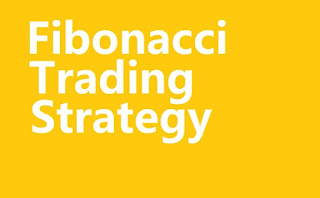Fibonacci Trading Strategy: Unlocking the Power of Mathematical Patterns
In the world of financial markets, traders are constantly searching for strategies that can provide an edge and improve their chances of success. One such strategy that has gained popularity is the Fibonacci trading strategy. Based on the mathematical patterns discovered by Leonardo Fibonacci, this strategy has proven to be a valuable tool for identifying potential price levels and predicting market movements. In this article, we will explore the concept of Fibonacci trading and how it can be applied to enhance trading decisions.
Understanding Fibonacci Numbers
Leonardo Fibonacci, an Italian mathematician from the 13th century, introduced a sequence of numbers known as the Fibonacci sequence. This sequence is created by adding the two preceding numbers to obtain the next number in the sequence. The sequence starts with 0 and 1, so the first few numbers are 0, 1, 1, 2, 3, 5, 8, 13, and so on. This sequence has a unique mathematical property, where the ratio of any number to the next number in the sequence approaches approximately 0.618, known as the golden ratio, and its inverse 1.618.The Golden Ratio and Fibonacci Retracement
The golden ratio, derived from the Fibonacci sequence, has found its application in various fields, including architecture, art, and even financial markets. In trading, the golden ratio and its inverse are used to identify potential retracement levels during a price correction. Traders believe that after a significant price move, the market tends to retrace a portion of that move before resuming its primary trend. Fibonacci retracement levels, derived from the golden ratio, are plotted on a price chart to identify potential support and resistance levels.Using Fibonacci Retracement Levels
To use Fibonacci retracement levels effectively, traders first identify a significant price swing in the market. This can be a recent uptrend or downtrend. They then plot the Fibonacci retracement levels by drawing horizontal lines at the key Fibonacci ratios of 23.6%, 38.2%, 50%, 61.8%, and 78.6% above the low and below the high of the price swing. These levels act as potential areas where the price may find support or resistance, indicating potential entry or exit points for traders.Fibonacci Extension Levels
In addition to retracement levels, Fibonacci extension levels are used to identify potential price targets when the market is in an uptrend or downtrend. These levels are derived from the Fibonacci sequence and are plotted above the high in an uptrend or below the low in a downtrend. Common extension levels include 127.2%, 161.8%, 200%, and 261.8%. Traders use these levels to anticipate where the price may reverse or continue its trend, allowing them to set profit targets or plan their exits.Applying Fibonacci Time Zones
Apart from price levels, Fibonacci ratios can also be applied to time analysis. Fibonacci time zones are used to identify potential reversal points in the market based on the elapsed time of a significant price move. Traders plot vertical lines on the price chart based on Fibonacci ratios such as 0.618, 1.000, 1.618, and so on, starting from the beginning of the price move. These time zones act as potential turning points in the market, indicating periods where the price may reverse or experience increased volatility.Fibonacci Fans and Arcs
In addition to retracement levels and time zones, Fibonacci fans and arcs are other tools used in Fibonacci trading strategy. Fibonacci fans are drawn by connecting trendline from significant lows or highs to subsequent significant lows or highs. These lines are then extended into the future to create a set of diagonal trendlines.These trendlines act as potential support or resistance levels, helping traders identify areas where the price may bounce or reverse its direction.
Fibonacci arcs, on the other hand, are drawn by first selecting a significant low or high point on the chart. From this point, three curves, based on Fibonacci ratios of 38.2%, 50%, and 61.8%, are drawn as arcs. These arcs act as potential support or resistance levels, providing traders with insights into where the price may find significant buying or selling pressure.
Combining Fibonacci Tools with Other Technical Indicators
While Fibonacci tools can be powerful on their own, many traders prefer to combine them with other technical indicators for confirmation and to enhance their trading decisions. Popular indicators such as moving averages, trendlines, oscillators, and volume analysis can provide additional insights into the market's direction and help validate potential Fibonacci levels.Managing Risks and Setting Stop Loss Orders
As with any trading strategy, risk management is crucial when using the Fibonacci trading strategy. Traders should always consider setting appropriate stop loss orders to limit potential losses in case the market moves against their anticipated levels. Stop loss orders can be placed below support levels in uptrends and above resistance levels in downtrends, ensuring that losses are controlled if the price invalidates the expected Fibonacci levels.Backtesting and Practice
To gain confidence in using the Fibonacci trading strategy, it is recommended to backtest the strategy on historical price data or practice using a demo trading account. This allows traders to see how the strategy performs under different market conditions and helps in fine-tuning the approach. It is important to note that no trading strategy guarantees success, and continuous learning and adaptation are essential to navigate the dynamic nature of financial markets.Conclusion
The Fibonacci trading strategy is a powerful tool that leverages mathematical patterns to identify potential price levels and predict market movements. By utilizing Fibonacci retracement and extension levels, time zones, fans, and arcs, traders can gain valuable insights into potential support, resistance, and reversal points in the market.However, it is important to remember that trading involves risk, and proper risk management techniques should always be employed. By combining Fibonacci tools with other technical indicators and practicing proper risk management, traders can enhance their trading decisions and potentially improve their chances of success in the financial markets.


Posting Komentar untuk "Fibonacci Trading Strategy: Unlocking the Power of Mathematical Patterns"